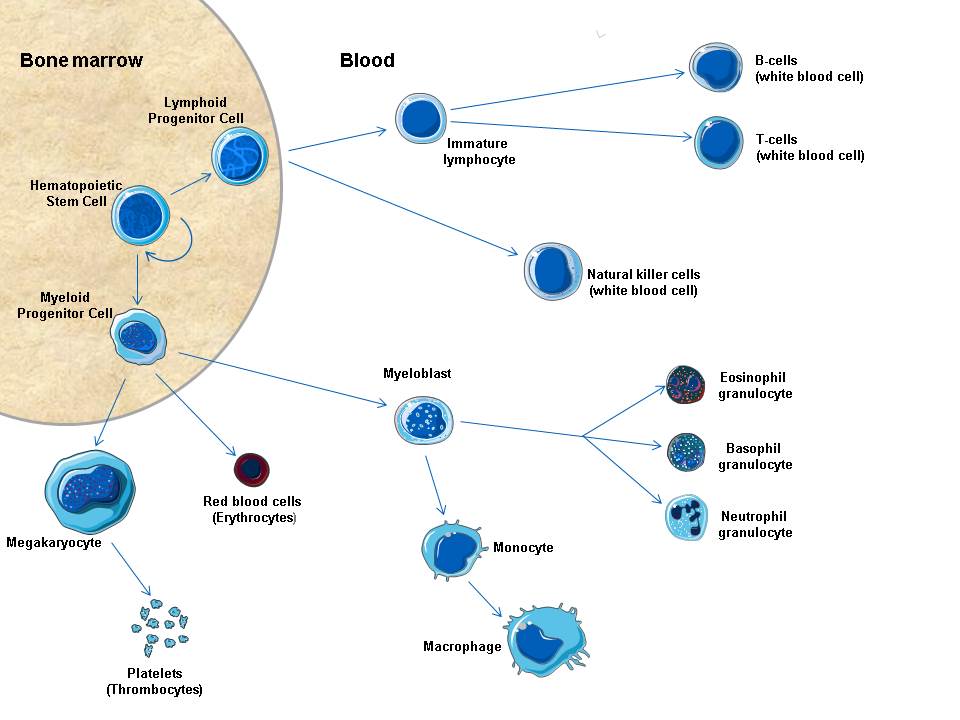Hematopoietic stem cells and hematopoesis
Stem cell transplantation is the transfer of stem cells from a donor to a recipient (patient). The donor and recipient can be the same person (autologous transplantation) or two different persons (allogeneic transplantation). In clinical practice today, only blood stem cells are transplanted. Blood stem cells are also known as haematopoietic stem cells. More detailed information on the donation process can be found here.

Hematopoiesis is the formation of blood cells from hematopoietic stem cells. Many of the blood cells have a limited lifespan and must therefore be constantly renewed. The diagram on the right shows the development of the various blood cells.
All blood cells are formed from stem cells – haematopoietic stem cells. The haematopoietic stem cells are located in the bone marrow and form the ‘immature’ blood cells there. These cells enter the bloodstream after a certain development process. Some of the haematopoietic stem cells are pluripotent, i.e. they have the ability to develop into other cell types. In this case, in lymphatic or myeloid progenitor cells, which can constantly renew themselves. Immature blood cells that are in the process of developing at a certain point in time have a predetermined development and can only differentiate in one or two specific directions, for example myeloblasts. All these cells show different markers on their surface (proteins that are bound to the cell surface and point outwards – see also Human Leukocyte Antigen System; HLA as an example) and can therefore be differentiated from each other.



























